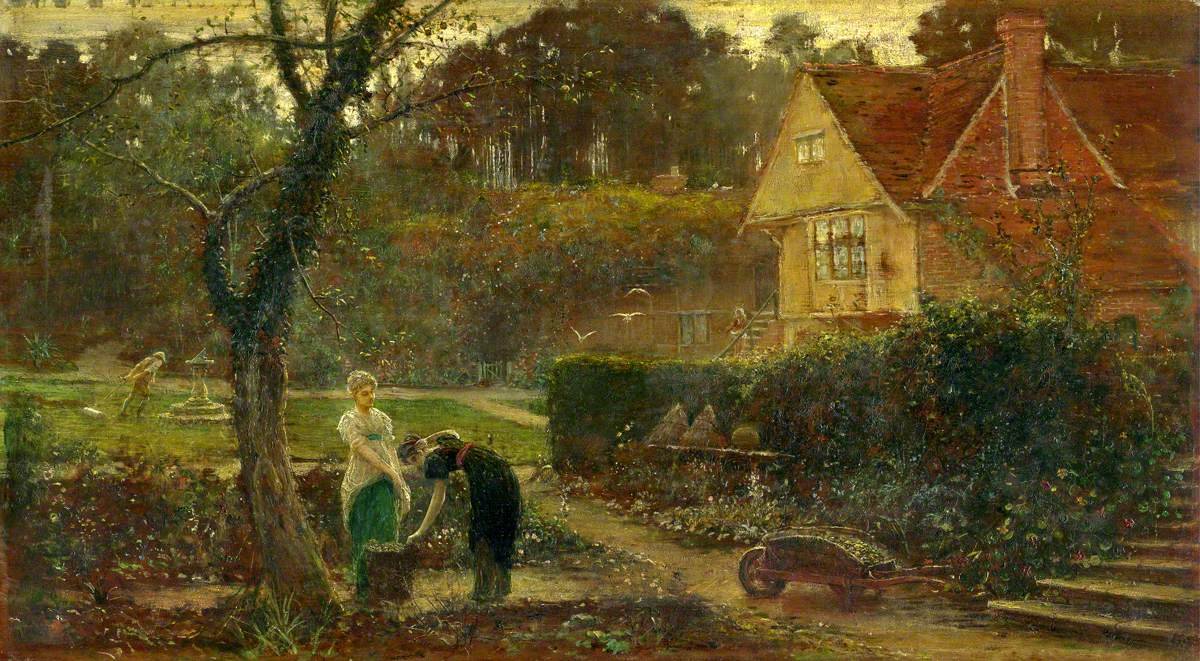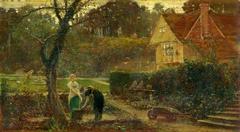
Garden Museum London: Visiting Hours, Tickets & Historical Sites Guide
Date: 14/06/2025
Introduction: Discover a Unique Landmark in London
Nestled on the south bank of the River Thames, the Garden Museum is one of London’s most distinctive historical sites. Dedicated exclusively to the art, history, and design of British gardens, it is housed in the former Church of St Mary-at-Lambeth—an architectural gem with origins dating back to the 14th century and deep ties to the Archbishops of Canterbury. Since its founding in 1977, sparked by the campaign to preserve the tombs of the pioneering Tradescant family, the museum has evolved into a vibrant institution celebrating British horticultural heritage.
Visitors to the Garden Museum can explore extensive collections of gardening tools, botanical art, archival materials, and the celebrated Tradescant “Ark” cabinet of curiosities. Dynamic temporary exhibitions, beautifully curated gardens, and contemporary amenities make the museum a must-visit for garden enthusiasts, history lovers, and cultural tourists alike. This comprehensive guide details everything you need to plan your visit—from opening hours and ticketing to highlights of the museum’s exhibitions and practical travel tips (Garden Museum; Wikipedia; Secret London).
Table of Contents
- Introduction
- Origins and Historical Background
- Architectural Evolution and Redevelopment
- The Tradescant Legacy and Core Collections
- Temporary Exhibitions and Expanding Horizons
- Cultural Significance and Community Value
- Visitor Information: Hours, Tickets & Accessibility
- Facilities and Amenities
- Getting There and Travel Tips
- Nearby Attractions
- Frequently Asked Questions (FAQ)
- Conclusion
- References
Origins and Historical Background
The Garden Museum occupies the former Church of St Mary-at-Lambeth, a site with roots predating the Norman Conquest. The church was a key part of the religious centre formed by the Archbishops of Canterbury in the 12th century, serving the local community for centuries (Wikipedia).
By the 1970s, the church had fallen into disuse and faced demolition. In 1976, Rosemary and John Nicholson discovered the tombs of John Tradescant the Elder and Younger—renowned 17th-century royal gardeners—within the churchyard (Secret London). Their campaign to save the site led to the creation of the Museum of Garden History in 1977, now known as the Garden Museum—the world’s first museum dedicated to gardening history.
Architectural Evolution and Redevelopment
The transformation from a deconsecrated church to a thriving museum required sensitive restoration, blending medieval and Victorian features with modern exhibition spaces (Wikipedia). A significant milestone was the £7.5 million redevelopment between 2015 and 2017, which introduced new galleries, learning spaces, and two innovative gardens: the Sackler Garden by Dan Pearson and a front garden by Christopher Bradley-Hole (Garden Museum).
The main gallery now occupies the nave, providing an immersive setting for artefacts and exhibitions, while the updated facilities ensure accessibility and comfort for all visitors.
The Tradescant Legacy and Core Collections
At the museum’s heart is the legacy of the Tradescant family—John Tradescant the Elder and his son, both royal gardeners and plant hunters whose tomb remains a focal point in the museum’s garden (Secret London). The core collection features:
- The Tradescant Ark: A recreation of the famed 17th-century cabinet of curiosities housing botanical and natural history specimens (Wikipedia).
- Historic Gardening Tools: Artefacts tracing the evolution of garden technology, such as early watering pots and hand tools (Garden Museum).
- Botanical Art & Photography: Paintings, photographs, and prints chronicling the cultural and aesthetic dimensions of British gardening.
- Archive of Garden Design: Working records from leading British garden designers, offering invaluable resources for researchers and enthusiasts (Secret London).
Temporary Exhibitions and Expanding Horizons
The museum’s vibrant programme includes regular temporary exhibitions on diverse themes. A recent highlight is the “Lost Gardens of London” exhibition (Oct 2024 – Mar 2025), curated by Dr. Todd Longstaffe-Gowan, which explores the history and disappearance of significant London gardens, featuring rare maps, paintings, and photographs (Gardeners Company; Stuff About London).
Other notable exhibitions have included “Cecil Beaton’s Garden Party,” showcasing the photographer’s passion for gardens, and “Nancy Cadogan: The Lost Trees,” reflecting on ecological change through art (houseandgarden.co.uk). Check the museum’s website for current and upcoming exhibitions.

Cultural Significance and Community Value
The Garden Museum is not just a repository of objects—it is a living institution that fosters dialogue about sustainability, urban green spaces, and the environmental importance of gardens in modern life (Garden Museum). As an independent charity, it relies on visitor support, donations, and community partnerships to preserve and interpret horticultural heritage for future generations (museums.eu).
Visitor Information: Hours, Tickets & Accessibility
Address
5 Lambeth Palace Road, London SE1 7LB
Opening Hours
- Daily: 10:00 am – 5:00 pm (last entry one hour before closing)
- Closed: Christmas Day and Boxing Day; check for early closures during private events (Garden Museum – Visit)
Admission Fees (as of June 2025)
- Adults: £16
- Senior Citizens: £13
- Students/Unemployed: £9
- Art Pass holders: £8
- Children (6 and under): Free
- Children (7–18): £9
- Family 1 (1 adult, 1 child): £20
- Family 2 (2 adults, 2 children): £40
- Friends, Patrons, Community Access Scheme, and Carers: Free
- London Pass holders: Free (Garden Museum – Visit)
Booking
Book online in advance or at the front desk. No physical tickets—simply give your name at entry and keep your confirmation email (Garden Museum Tickets).
Accessibility
- Step-free access to galleries, café, and gardens
- Accessible toilets and baby changing facilities
- Free entry for carers; guide and assistance dogs welcome
- Lift to the first floor (contact in advance to confirm operation)
- The medieval tower is not wheelchair accessible (Garden Museum – Accessibility)
Facilities and Amenities
- Gardens: The museum boasts several gardens, including the front garden, courtyard by Dan Pearson, and a historic knot garden (museumslondon.org).
- Medieval Tower: Climb 131 steps for panoramic views of London (included with admission or £4 separately; subject to weather and event closures) (Tower Climb).
- Garden Café: Award-winning, seasonally inspired menu; open during museum hours. Booking recommended for busy periods (South Bank London).
- Gift Shop: Botanical books, tools, gifts, and seeds.
- Cloakroom: Free storage for large bags (not permitted in galleries).
- Toilets and Baby Changing: Available on site.
- Cycle Racks: Outside the museum.
- No On-site Parking: Paid parking available nearby; museum is within the Congestion Charge Zone.
Getting There and Travel Tips
- Underground: Lambeth North (Bakerloo Line), Westminster (Jubilee, Circle, District Lines), Vauxhall (Victoria Line), Waterloo (10–20 minutes’ walk)
- Bus: Routes 3, 77, 507, C10 stop nearby
- Bicycle: Cycle racks and Santander Cycles docking stations available
- Riverboat: Pier at Lambeth Bridge
- Car: Limited paid parking; use public transport where possible (EnglandRover)
Travel Tip: Weekday mornings are quieter; spring and summer showcase the gardens at their best. Check the museum website for amended hours or private event closures.
Nearby Attractions
- Lambeth Palace: Next door; historic home of the Archbishop of Canterbury
- Houses of Parliament & Westminster Abbey: A short riverside walk away
- South Bank: Theatres, restaurants, and riverside walks
- Chelsea Physic Garden, Kew Gardens, and Wisley Gardens: Ideal for garden lovers seeking more botanical inspiration (Londondrum)
Frequently Asked Questions (FAQ)
Q: What are the Garden Museum’s opening hours?
A: Daily 10:00 am – 5:00 pm; closed Christmas Day and Boxing Day.
Q: How much are tickets?
A: Adults £16; concessions available for seniors, students, and others. Children under 6 enter free. See above for full details.
Q: Can I access the gardens and nave for free?
A: Yes, the historic nave and gardens are free to access. Permanent collections and exhibitions require a ticket.
Q: Is the museum wheelchair accessible?
A: Yes, step-free access is available to all main areas except the medieval tower.
Q: Can I climb the tower?
A: Yes—subject to availability, weather, and capacity. Tower access included with museum admission or £4 separately.
Q: Are there family-friendly activities?
A: Yes, family trails, children’s workshops during holidays, and hands-on activities.
Q: Can I buy tickets online?
A: Yes. Online booking is recommended, especially during busy periods.
Q: Are group visits welcome?
A: Yes, but groups of 10 or more should pre-book; see the museum website for group options.
Q: Is photography permitted?
A: Photography is allowed in most areas; restrictions may apply in some exhibitions.
Conclusion
The Garden Museum is a remarkable destination where British gardening history, striking architecture, and contemporary culture converge. Its thoughtfully curated collections, tranquil gardens, engaging exhibitions, and excellent visitor facilities provide an enriching experience for tourists, families, and garden enthusiasts alike. Plan your visit today, explore the museum’s diverse offerings, and discover one of London’s most extraordinary cultural sites.
For the latest updates, exhibitions, and visitor information, visit the official Garden Museum website. Enhance your visit with the Audiala app for interactive guides, and follow the museum on social media for news and inspiration.
References
- Garden Museum Official Website
- Wikipedia: Garden Museum
- Secret London: Garden Museum
- Londondrum: Garden Museum
- Stuff About London: Lost Gardens Exhibition
- museumslondon.org: Garden Museum
- Garden Museum – Visit
- Garden Museum Tickets
- EnglandRover: Garden Museum
- South Bank London: The Garden Museum
- Gardeners Company: Lost Gardens Exhibition
- houseandgarden.co.uk: Best Art Exhibitions in London




















































































































































































































































